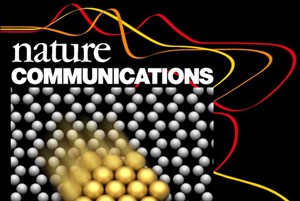 A team of Bilkent researchers led by Asst. Prof. Mehmet Z. Baykara of the Department of Mechanical Engineering and the National Nanotechnology Research Center (UNAM) has published an article on nanoscale friction in Nature Communications, one of the world’s leading multidisciplinary science journals.
A team of Bilkent researchers led by Asst. Prof. Mehmet Z. Baykara of the Department of Mechanical Engineering and the National Nanotechnology Research Center (UNAM) has published an article on nanoscale friction in Nature Communications, one of the world’s leading multidisciplinary science journals.
Friction is a ubiquitous fact of nature. Without friction, we would not be able to walk, write with a pencil or play stringed instruments. On the other hand, friction is considered to be a major problem for many mechanical systems, where it causes unavoidable loss of useful energy and has drastic economic impact.
Despite the importance of friction in a variety of scientific and technological fields, surprisingly little information has been uncovered about the fundamental physical laws that govern it, ever since the first documented friction experiments performed by Leonardo Da Vinci six centuries ago.
Now, Dr. Baykara’s research team has made an important contribution to the fundamental understanding of friction on the nanometer scale, as detailed in the recently published Nature Communications article.
Specifically, Bilkent researchers have shown that it is possible to create atomically flat interfaces formed by nanometer-sized gold and carbon-based surfaces that exhibit vanishing friction under ambient conditions, a phenomenon termed “structural lubricity.” The Bilkent team has demonstrated, thanks to computational work led by Asst. Prof. Engin Durgun of UNAM, that the nanoscale interfaces studied in the work remain molecularly clean under ambient conditions, leading to structural lubricity.
When asked about the importance of the work, Prof. Robert W. Carpick (John Henry Towne Professor and department chair in the Department of Mechanical Engineering and Applied Mechanics at the University of Pennsylvania) remarked, “This work is an impressive discovery: ultra-low friction, enabled by structural lubricity, has been observed for the first time in ambient conditions. I expect this will motivate more studies of this phenomenon and the conditions where it occurs, which opens up the possibility of taking advantage of this in real-world applications.”
UNAM’s founder, Prof. Salim Çıracı of the Bilkent Department of Physics, further underlined the significance of the research. “Realization of frictionless sliding in ambient conditions, which would be one of the major scientific breakthroughs of the century, has been a dream of several researchers. I believe Dr. Baykara and Dr. Durgun have achieved important progress toward motion without energy dissipation.”
Ebru Cihan, an MS graduate of Bilkent, and Dr. Semran İpek, a visiting scientist at Bilkent, joined Dr. Baykara and Dr. Durgun as authors of the article. Remarking on the overall significance of the publication, Dr. Baykara noted, “We are particularly proud of the fact that this article is only the second one that has been published with Turkish addresses only in Nature Communications. Moreover, I am a firm believer in the empowerment of women through science and the arts. The fact that the first two authors in our article are women is especially important in this regard.”
The open-access article is available online on the Nature Communications website: http://www.nature.com/ncomms/2016/160628/ncomms12055/full/ncomms12055.html.
More information on related research activities may be obtained from the Scanning Probe Microscopy (SPM) Research Group website: http://spm.bilkent.edu.tr.
